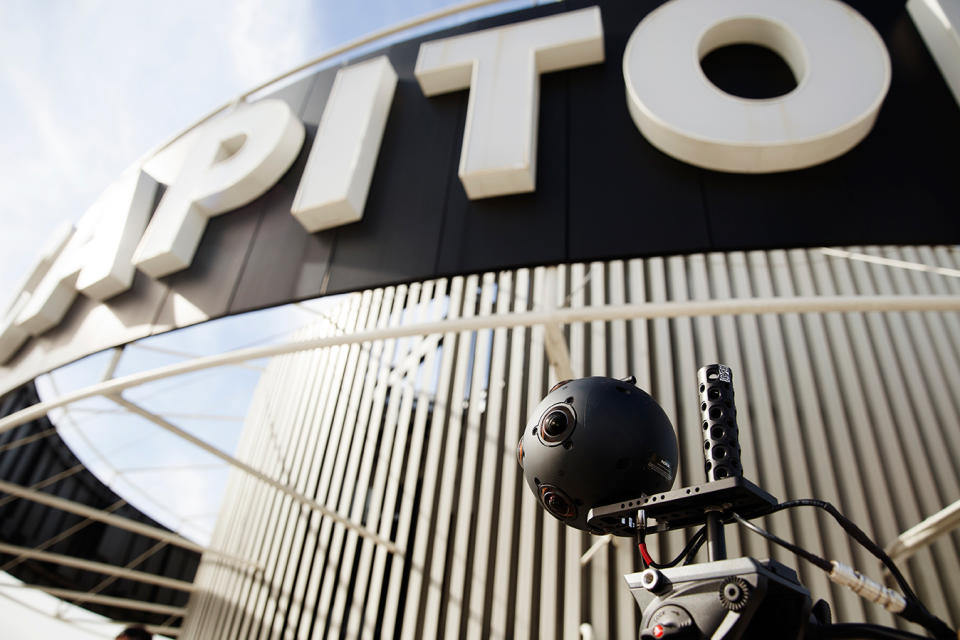Nokia president talks Ozo and the company's big VR bet
You can call it a comeback.

"We had some projects in augmented reality. We had projects in the camera. We had projects in head-mounted displays," says Nokia Technologies president Ramzi Haidamus, speaking to Engadget at the Sundance Film Festival about the company's virtual reality pivot. "We had projects all over the ecosystem, so to speak. And it was a combination of: How good are we technically? How well are we protected from an IP perspective? And finally, where is the area where we're going to get the biggest advantage from the time to market?"

Haidamus soon realized that, rather than compete with the likes of Oculus, Sony and HTC for the crowded VR headset market, Nokia could plug a hole in the production process and reinvent itself. "The HMD I saw was actually pretty good, but I felt like there was so much competition that was going to happen in the marketplace," he says.
By offering Ozo, a camera that combines live streaming, live monitoring, automatic stitching (a process used to blend the separate camera feeds) and 3D audio and video, Nokia could alleviate the headaches and obstacles faced by early VR filmmakers. And, more crucially, establish Ozo as the go-to VR production solution and itself as a market leader.
"It was a no-brainer to go after the camera versus the head-mounted displays, which are going to be quite commoditized pretty soon," Haidamus says of the decision to go all in on Ozo.
Nokia's days of mobile phone domination are long gone -- that sizable (and formerly lucrative) piece of the company pie was sold to Microsoft for $7 billion in the spring of 2014. Today, with Haidamus at the helm, the company's focused on a reinvigoration of its brand that's one part licensing business and one part gamble on the coming future of virtual reality under its TECH banner.

With Ozo, its $60,000 production-ready VR camera, Nokia's poised to become a big player in that burgeoning market. Already, the company's differentiated itself within the relatively small field by offering a solution to a problem that's plagued creators of VR content: You can watch live playback using a head-mounted display like the Oculus Rift. "Ozo brings you the ability to do a live monitoring of live action on set," says Haidamus of the feature he believes filmmakers most want. Previously, directors using other VR recording solutions would have to wait until the post-production process to view the finished, "stitched" end product.
"It was a no-brainer to go after the camera versus the head-mounted displays," says Haidamus.
Using a combination of eight lenses, which each capture video in 2K x 2K resolution, and eight microphones, Ozo can record an accurate replication of the "sound sphere" of a 360-degree environment. The camera also has the capability of incorporating object-based audio into its ambient mix using RF tags and mics placed on nearby people during the filming process. And all of this comes together in a lightweight (less than 10 pounds), futuristic package that looks like what you'd expect from a VR camera. It can even be mounted on a drone.
"The unit itself is about the average size of the human head," says Haidamus.

To further streamline the production process, Nokia has made Ozo's file storage convenient by housing a 500GB SSD alongside the battery in an oblong, removable cartridge. That allows filmmakers to record up to 45 minutes of VR playback and also hot-swap cartridges so filming can continue uninterrupted.
Since it's still early days for VR -- most players in the industry refer to 2016 as 'Year One' -- the community is quite tight-knit. And that closeness has led to collaboration. Haidamus says that Nokia's been working closely with 20th Century Fox, a studio that's been very aggressive in the VR space, on development of the camera. There are also a number of partnerships in the works, though Haidamus isn't ready to divulge details on them just yet. But he points to early experiments with the NBA, where Ozo was placed courtside at an LA Lakers game, as well as a live stream of a concert performed on the roof of Capitol Records as proof of the camera's potential.
"If you are an artist and you want to create that connection between the viewer and your story," says Haidamus, "Ozo is like the amazing creator of empathy, because we put you right there in the middle of that scene."

It's clear from speaking with Haidamus that the Nokia of today is not the Nokia many have come to know, love and disregard over the years. Whereas the Finnish company once was caught off-guard by innovation happening in the mobile space it helped to create and govern, now it's at the forefront of a cultural sea change in entertainment.
"Knowing where the market was going," says Haidamus, "knowing we're early but not too early, puts us exactly in terms of perfect timing to catch a ... technology that's disrupting an existing market."
[Image credits: Nokia]

